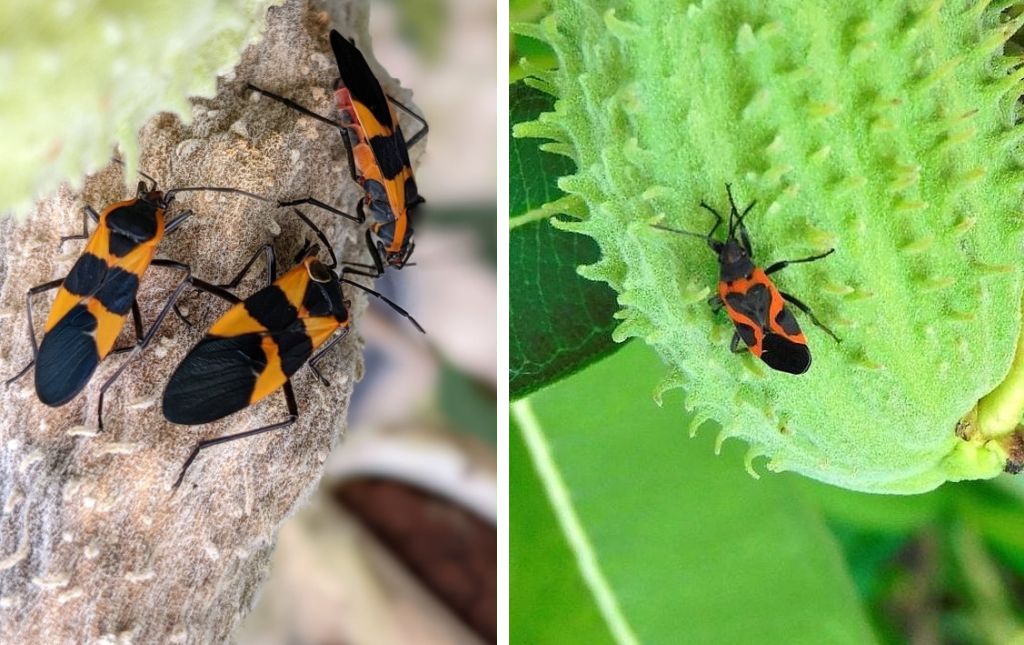
14 August 2022
At this time of year you’ll often see black and orange bugs crawling on milkweed seed pods. These are milkweed bugs, large and small, that consume the seeds by injecting saliva through the pod shell into the seed beneath and sucking out dissolved seed matter. Though the “large” and “small” bugs look very similar they are not the same species.
The Large Milkweed Bug – Oncopeltus fasciatus
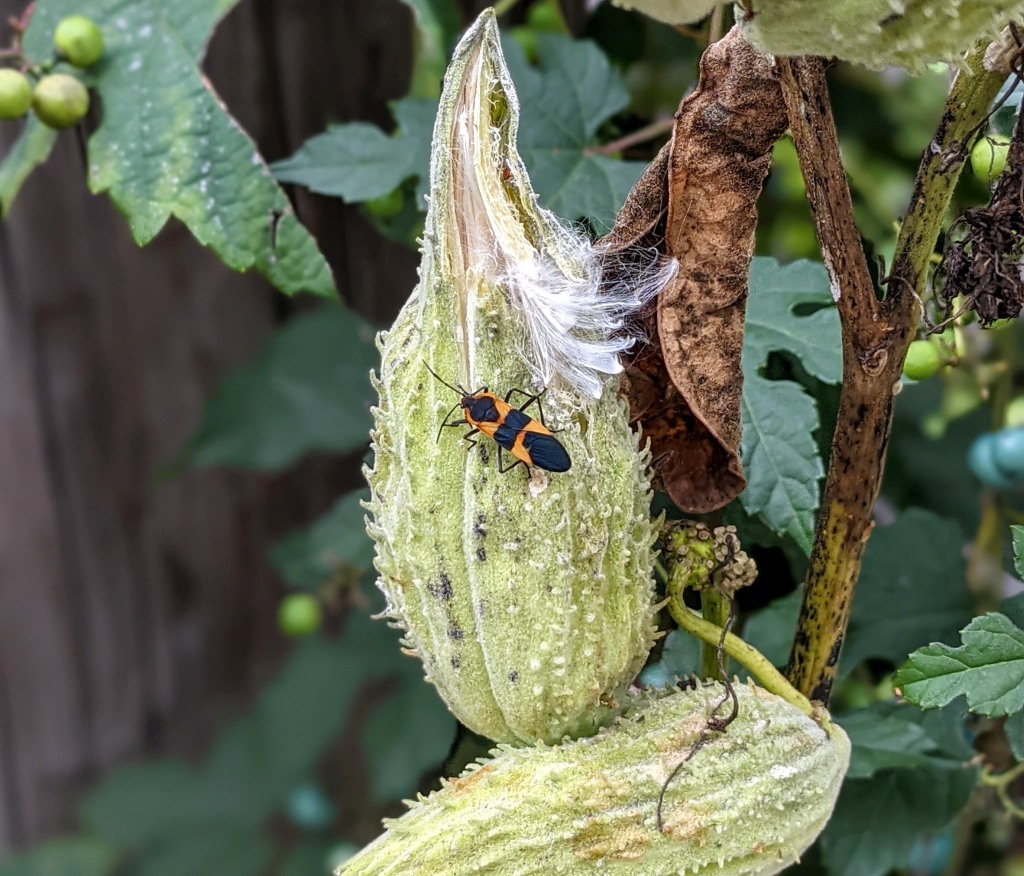
Large milkweed bugs are orange and black with a black horizontal band across the middle of the back. In this species you can tell male from female. On the underside of the bug, the 4th abdominal segment is a black stripe on males and two black spots separated by orange on the females. Click here for a photo of two mating: female at top, male at bottom.
O. fasciatus overwinter as adults and are so easy to raise that they are used in labs and sometimes raised at home. To avoid cold winters the northern populations migrate!
The Small Milkweed Bug – Lygaeus kalmii
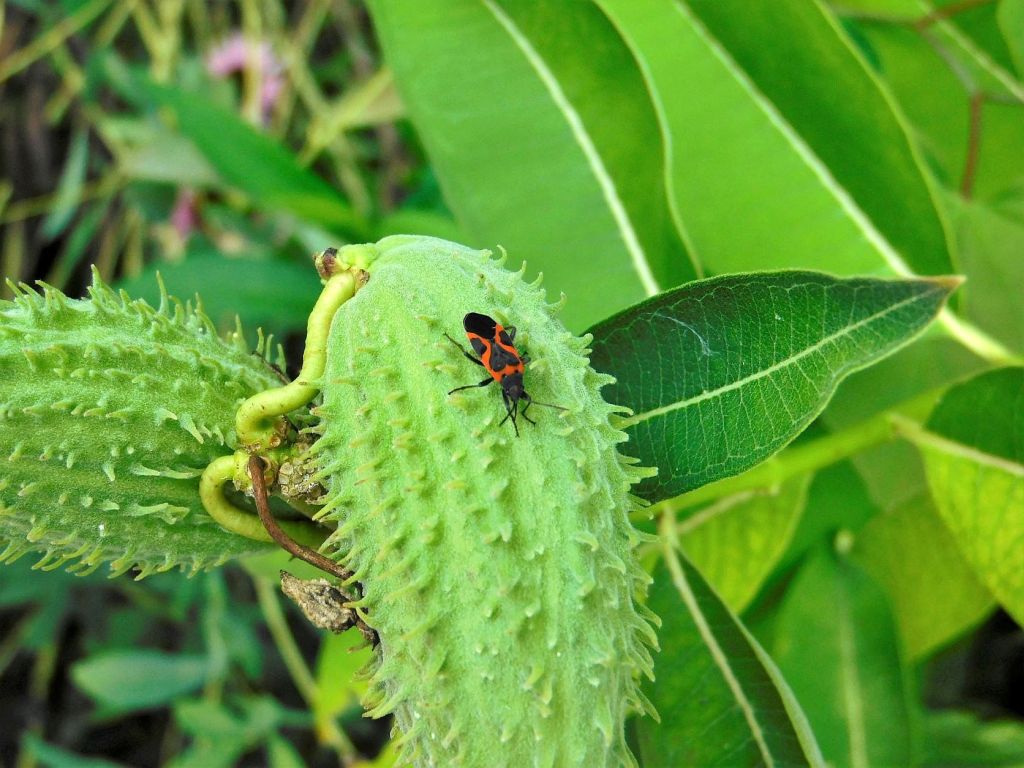
The orange and black “small” milkweed bug (Lygaeus kalmii) has a different pattern on its back: a black heart in the center and two black patches on either side (see top right photo).
Juveniles are dependent on milkweed but when milkweed is scarce the adults become scavengers and predators that, according to bugguide.net, have been reported feeding on honey bees, monarch caterpillars and pupae, and dogbane beetles.
L. kalmii range across the US and Canada except for the southeastern US. They overwinter as adults by producing antifreeze in their bodies to survive the cold.
The False Milkweed Bug – Lygaeus turcicus
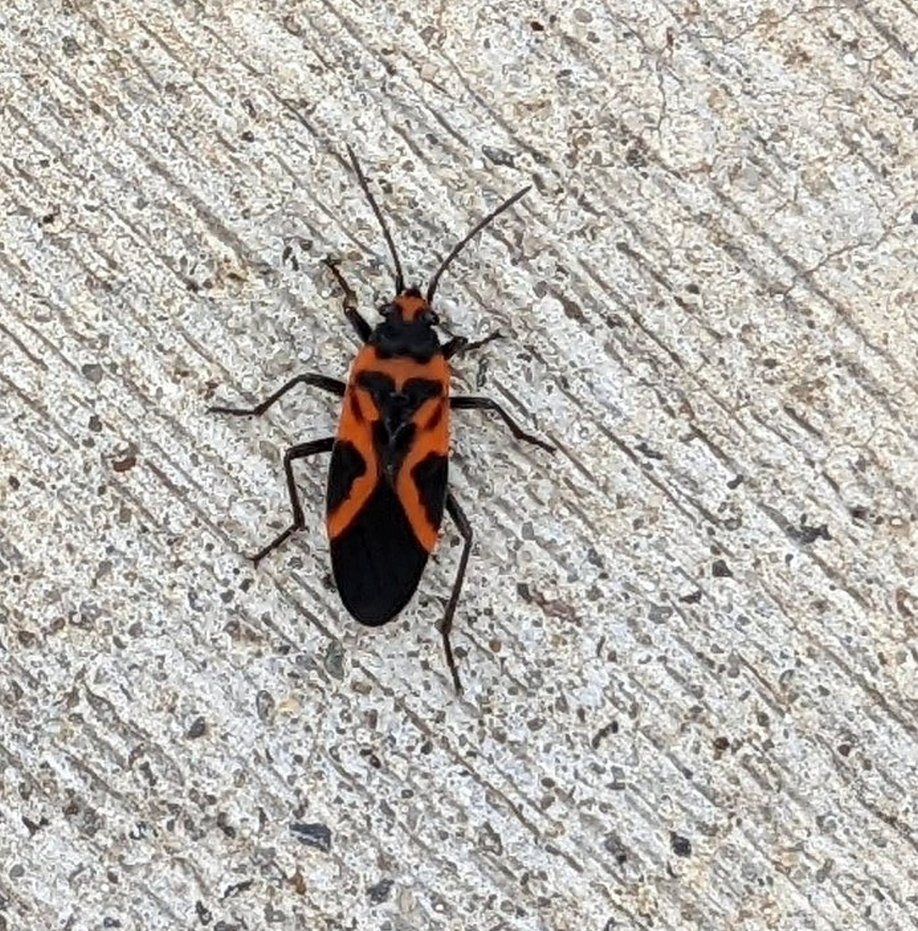
Like the monarch butterfly, the orange and black color of milkweed bugs warns predators that they are toxic. Viceroy butterflies mimic monarchs so they won’t be eaten. “False” milkweed bugs (Lygaeus turcicus) mimic small milkweed bugs (L. kalmii) for the same reason.
The black pattern on the “false” milkweed bug is slightly different. Instead of a black heart it is a V that seems to overlay the black beneath it much like the W overlays the V in West Virginia University’s logo.
The “false” bug also has black parentheses around the V. Compare the two below.
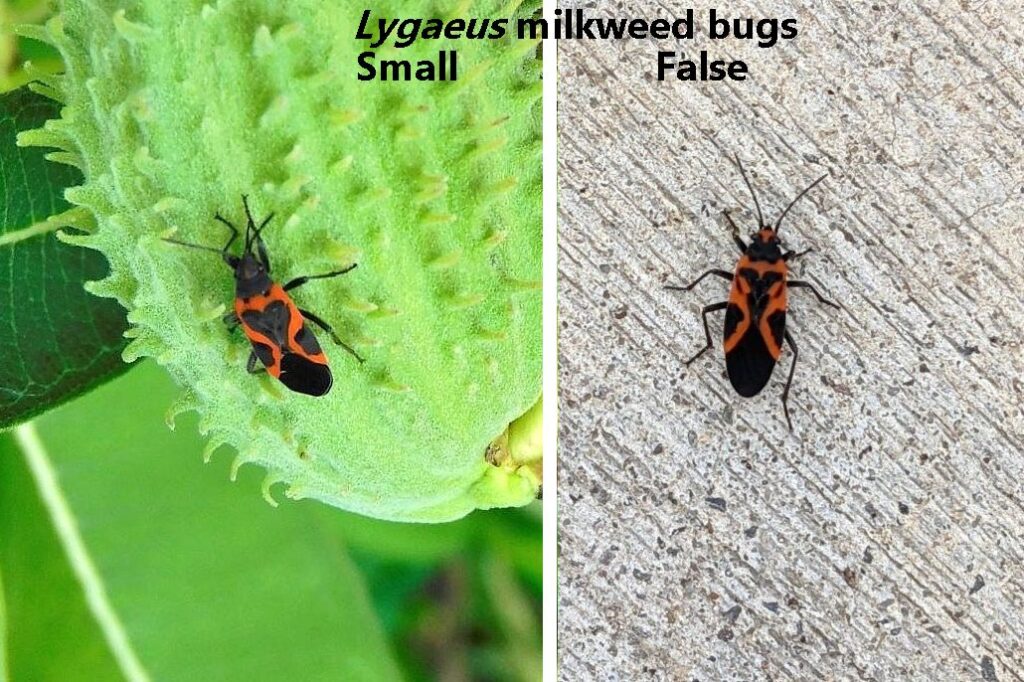
The “false milkweed bug” could be called the “false sunflower bug” because that’s what he eats — the seeds of Heliopsis helianthoides.
(photos by John English and Kate St. John, WVU logo decal for sale at Amazon)
